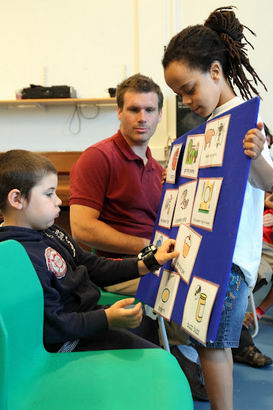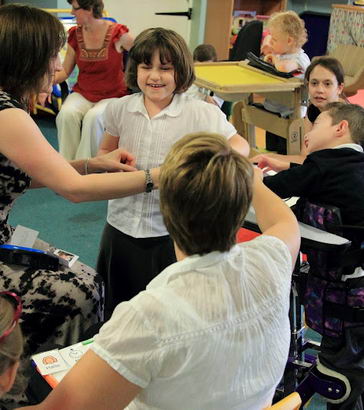Social development looks at the way in which children relate to and play with other children
and adults.
Emotional development considers the child's feelings of security, as well as the ability to express and control emotions.
Social and emotional development are closely linked. Behavioural development is often linked with social and emotional development.
The typical stages of emotional development can be found on the following site.
Stages of emotional development
Find out more about social and emotional red flags here.

Healthy social emotional development for children is based upon early experiences of:
- Emotional warmth and security in their relationships with
key caregivers; - Key caregivers who are responsive and interactive, adjusting their interaction to the changing needs of the child;
- Caregivers who use elaborative talk and evaluative reflection to help a child to understand their emotional and social world and their own place within it.
(Evangelou et al, 2009)
Poor early experiences may be off-set by later positive and sensitive parenting.

The core outcomes of emotional development are the ability to:
- Identify and understand feelings;
- Identify and understand emotional states in others;
- Manage strong emotions;
- Regulate own behaviour;
- Develop empathy for others;
- Make and sustain relationships.
(Center on the Developing Child, 2004)
The emotional experiences of newborns and young infants occur most commonly during periods of interaction
with a caregiver (such as feeding, comforting, and holding). Infants display distress and cry when they are hungry cold, wet
[etc.], and they experience positive emotions when they are fed, soothed, and held. During this early period, children are
incapable of modulating the expression of overwhelming feelings, and they have limited ability to control their emotions.
Center on the Developing Child, 2004
By nine months old, babies actively seek engagement with those around them and copy their responses to events
Evangelou et al, 2009
At 1-3 years, children's use of language, and other ways to represent things in their absence (ie symbolically) emerges.
They also begin to understand their own and others' minds. Being involved in conversations about behaviour, emotions and their causes helps children speed up their development of a 'theory of mind' (Goswami and Bryant, 2007).
Pretend play allows children to explore the feelings and intentions of others. They gain:
an understanding of basic emotions such as happiness, sadness and anger during infancy and...more relational or social
emotions such as empathy, guilt or shame...later in the
preschool years.
Evangelou et al, 2009
![Two girls using tech talk with a teacher]](img/m01p070b/chadsgrove_1226_6.jpg)
In working with a group of pre-school children for three years, Blair et al (2004) found that the children's ability to cope with emotions was more important in developing early social behaviours than their individual temperaments. Blair et al found that 'facing' emotional problems helped children to develop skills to control their emotions.
Blair et al suggest that caregivers encourage children to communicate and to discuss emotions, using stories and other ways (eg pictures, pretend play, etc.), to help prepare them emotionally and socially.
Think about two children you know who are seven or eight years old. Choose two who seem to have different characteristics.
Perhaps one is shy and one outgoing, or one is helpful and the other rather
self-centred.
Note down a few phrases to describe how they appear socially and emotionally.
Read the developmental milestones and red flags for 'Social and emotional development' in this list.
Childhood developmental milestones (Kirby, 2012)
Compare what you find there with what you have noted about the two children you are focusing on. Does their behaviour seem to fit in with their age group?

Blair, K., Denham, S., Kochanoff, A., Whipple, B. (2004) Playing it cool: Temperament, emotion regulation and social behavior in preschoolers, Journal of School Psychology, 42 (6), Elsevier Science, 419-443.
Gerber, R.J., Wilks, T. and Erdie-Lalena, C. (2011) Developmental milestones 3: social-emotional development, Pediatrics in Review 32, 533-536.
Evangelou, M., Sylva, K., Kyriacou, M., Wild, M. and Glenny, G. (2009) Early Years Learning and Development: Literature Review. Annesley: DCSF Publications.

Center on the Developing Child (2004) Children's Emotional Development Is Built into the Architecture of Their Brains: Working Paper No. 2. Cambridge, MA: Center on the Developing Child, University of Harvard (accessed 12.1.12).